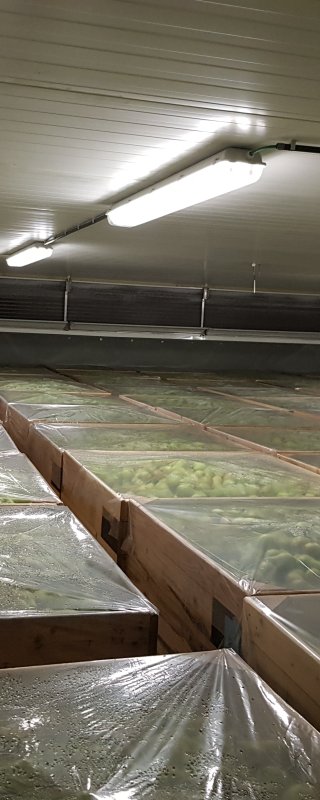
Cold room design
The design of cold storage rooms varies a lot. The exact design depends on many aspects. Before a new room is built, many questions have to be answered. An important one is what temperature the room should be able to reach? Which cooling equipment is needed then? Should the room be suitable to cool down products that come in at high field temperature? It is interesting and useful to recognize the different elements of the cold room and know the reasoning behind it.
Directly to
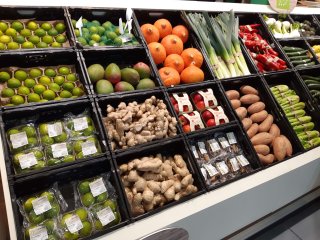
Temperature requirement
Different commodities need different temperatures. In some cases, the desired temperature of fresh products can even be below 0 degrees C, such as long storage of pears. Room insulation and cooling capacity (cooling equipment) are designed according to the requirements of the specific product. It is also important to know whether the function of the room is to store product that is already at low temperature, or whether it must have the possibility to cool the product from warm (field) temperature to lower storage temperature.
Room volume
Cold rooms come in all sizes. Rooms with smaller volumes in the range of a few hundred m3 are the most common. Five rooms of 200 m3 give more flexibility in the choice of temperature than 1 room of 1000 m3. Most companies have rooms with various temperature differences. On the other hand, the more rooms, the more insulation panels, refrigeration units and accessories are needed.
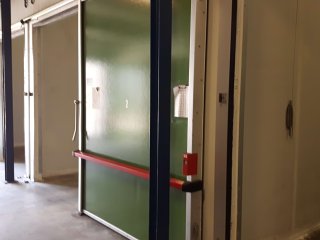
Insulation
The purpose of insulation of storage rooms is to minimize heat transmission through walls, floor and ceiling. PUR/PIR (polyurethane, polyisocyanurate) sandwich panels are nowadays usually chosen for wall insulation. A thicker insulation gives a higher insulation value. The choice of insulation thickness is based on a compromise between costs of the insulation panels, loss of useful store volume, energy consumption by the cooling system and impact of reduced heat load on product quality. Insulation usually requires little or no maintenance. Insulation panels can be easily cleaned with soap and water. When using a high-pressure cleaner, make sure that you do not damage a gas-tight finish or sealant.
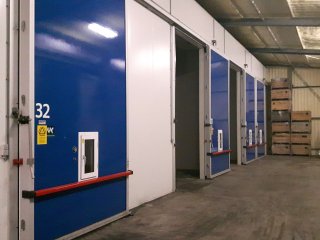
Door and window
The room door is also made of insulated material. It must close tightly, so damage and dirt (on the rubber seals) should be avoided. There are several types of doors, some open sideways and others open vertically. Some must be opened by hand, others can be operated electrically. It is important to monitor the quality of the product during storage. Therefore, Controlled Atmosphere rooms can have special control windows. These are locked for safety. Under CA conditions, these should only be opened under strict safety guidelines.
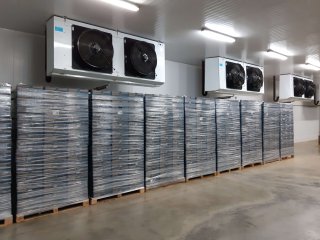
Evaporator
The function of the evaporator is to remove heat from the room. In summary, its function can be described as follows. A liquid refrigerant enters the evaporator on one side via a pipe system. On the other side it leaves the evaporator (partly) as a gas through pipes. The pipes are connected to the rest of the refrigeration system that is located outside the room. This evaporation proces takes place under low pressure. The evaporation of the refrigerant causes a low temperature of the evaporator coils. Fans guide air from the room over the coils so that the air leaving the evaporator will be colder than the air entering the evaporator. Depending on the need for cooling, the evaporator is switched on and off. The evaporator coils can become so cold that ice can form on them. In that case, there is a regular (automatic) defrosting.
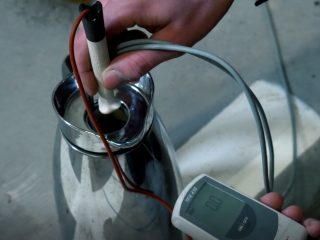
Temperature sensors
A number of temperature sensors can be found in a storage room. It must contain at least a control sensor, product sensors and often the defrost sensor. A control sensor is available in each storage room to measure the air temperature at a fixed position. This sensor is usually placed in the air flow on the suction side of the evaporator. It is used to control the on/off cycles of the cooling. Product sensors are strongly recommended at least in the coldest position and in the warmest position in the room. Another sensor is the defrost sensor that is located near the evaporator coils. It is used to control the defrosting action. This sensor measures the coil temperature. When the coil is ice-free (above 0 °C), the defrosting can be stopped.
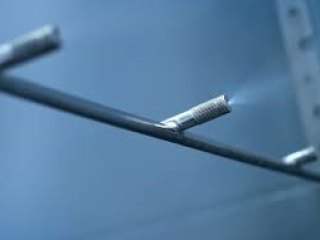
Humidification system
Storage rooms can be equipped with humidification systems for the quality of fresh products if necessary. Different types of humidification systems are being used. Ultrasonic systems are placed outside the room. They produce a fine mist. This fog is brought into the room via a tube or piping system. These systems usually bring the fog to the front of the evaporator. During operation, the evaporator fans blow the mist into the room. Another group of humidification systems make use of nozzles. These nozzle humidification systems often have a central pump in the storage facility and a valve per room. One or more nozzles are then placed near the outgoing air flow of the evaporator.
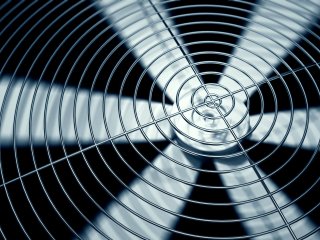
Air circulation and ventilation
Fans perform the task of air circulation in the room. Air circulation is necessary to limit temperature differences between parts of the room. The fans can be found at the back or frontside of the evaporator and sometimes there are additional fans present in the room. Besides air circulation, ventilation is important. Ventilation refers to the exchange with air from outside the room. Doors which are (partly) open and windows contribute to ventilation. Also fans for ventilation may be found in walls or ceiling. When workers are present in cold rooms, this air exchange is necessary to maintain a healthy and safe environment. Controlled Atmosphere rooms, which are closed to workers, are often equipped with automatic aeration. If the oxygen level in the room becomes too low, ambient air enters the room via valves in a controlled manner.